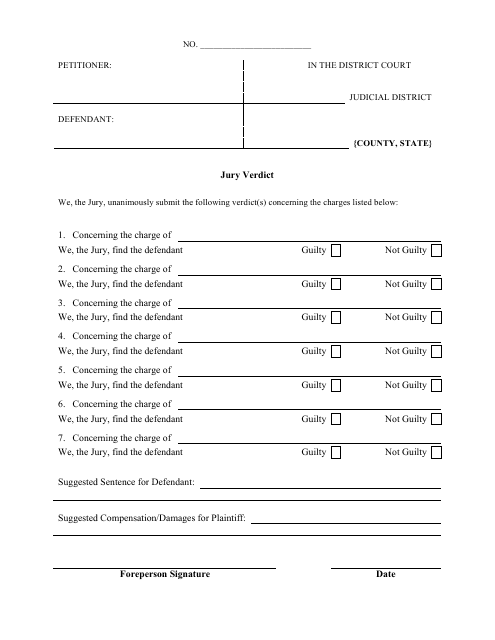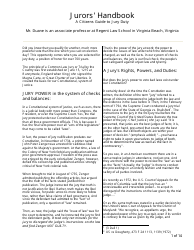Jury Verdict Form
The Jury Verdict Form is used to record the unanimous decision reached by a jury in a trial. It includes a summary of the facts, the legal claims, and the verdict rendered by the jury.
The jury foreperson typically files the jury verdict form.
FAQ
Q: What is a jury verdict form?
A: A jury verdict form is a document used to record the decision made by a jury in a court case.
Q: What is the purpose of a jury verdict form?
A: The purpose of a jury verdict form is to formally document the jury's decision on the outcome of a court case.
Q: What information is typically included in a jury verdict form?
A: A jury verdict form typically includes the names of the parties involved in the case, the specific charges or claims being decided, and the jury's determination of guilt or liability.
Q: Who fills out the jury verdict form?
A: The members of the jury fill out the jury verdict form, indicating their decision after considering all the evidence and arguments presented during the trial.
Q: Is the jury verdict form legally binding?
A: Yes, the jury verdict form is legally binding. The decision recorded on the form is the official outcome of the case and must be followed by the court.
Q: What happens after the jury verdict form is filled out?
A: After the jury verdict form is filled out, it is submitted to the judge, who reviews it to ensure that it is properly completed. The judge then announces the verdict in the courtroom.
Q: Can a jury verdict form be appealed?
A: Yes, a jury verdict can be appealed. If either party disagrees with the jury's decision, they can file an appeal, arguing that there were errors or legal issues that affected the outcome of the case.
Q: What happens if the jury verdict form is unclear or incomplete?
A: If the jury verdict form is unclear or incomplete, the judge may send the jury back for further deliberation to clarify their decision or correct any mistakes on the form.


